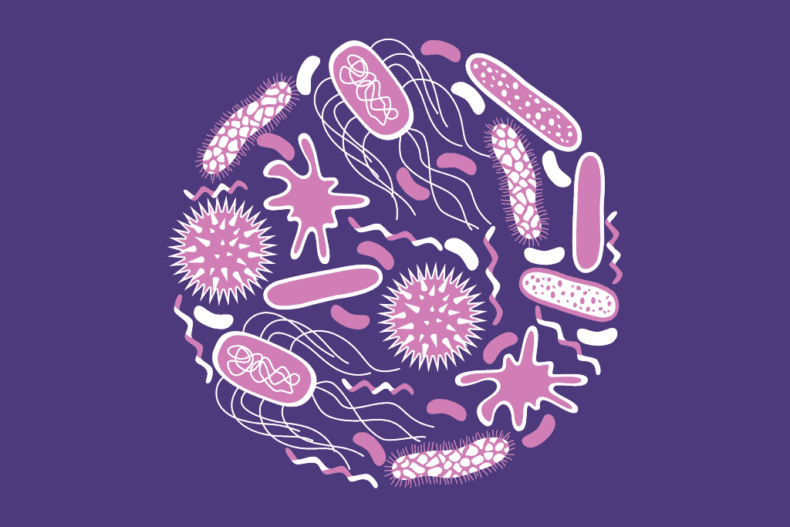Recent research on the development of gut bacteria in humans and other species may lead to more individualised and targeted treatments.

The early humans brought their gut microorganisms with them when they left Africa. It turns out that these bacteria evolved at the same time as them.
There are hundreds to thousands of different kinds of bacteria and archaea in the human gut microbiome. Different strains of a specific species of microbe have various Genes that may have an impact on your health and the diseases to which you are predisposed.
People who reside in various nations around the world exhibit considerable differences in the gut microbiome’s microbial composition and diversity. There is still little knowledge on why various groups of people have different strains of the same species of gut microorganisms, despite the fact that researchers are beginning to grasp what factors, such as diet, affect microbiome makeup.
We are scientists who investigate the evolution of microbes and microbiomes. Our newly released research revealed that bacteria followed human evolution by limiting their existence to the gut in addition to diversifying alongside their early modern human hosts as they migrated around the world.
Microbes and humans have similar evolutionary histories
We postulated that the microbial species in humans’ stomachs also diversified as they dispersed throughout the world and changed genetically. In other words, human hosts and gut microorganisms “codiversified” and evolved together, just as human beings did, resulting in the distinct appearances of individuals in Asia and Europe.
We needed to combine data from the global human genome and microbiome in order to evaluate this. However, there were few data sets available when we began our work that included information on both an individual’s microbiota and genome. We needed data that was more representative of populations all across the world because the majority of publicly available data was from North America and Western Europe.
Due to this, our research team recruited mothers and their young children in Gabon, Vietnam, and Germany in addition to using data that was already available from Cameroon, South Korea, and the United Kingdom. We took faecal samples to sequence the genomes of the adult gut microorganisms and collected saliva samples from the adults to determine their genotype or genetic traits.
We used information from 839 adults and 386 kids for our analysis. We created phylogenetic trees for each individual as well as 59 strains of the most frequently encountered microbial species in order to evaluate the evolutionary histories of people and gut bacteria.
We found a gradient in the degree to which the human and microbial trees matched when we compared them. While some bacterial trees did not at all match the human trees, others did match very well, showing that these species diversified with humans. In reality, some microbial species have been involved in evolution for hundreds of thousands of years.
In addition, we discovered that when compared to bacteria that did not co-diversify with humans, co-evolving microbes have a distinct set of genes and features. Person-associated microbes have smaller genomes, higher oxygen and temperature sensitivity, and are typically unable to sustain temperatures below that of an adult human.
On the other hand, gut microorganisms with less of a connection to human evolution contain characteristics and genes found in free-living bacteria in the environment. This data shows that codiversified microorganisms are highly dependent on the bodily environment and need to be promptly transmitted from one person to the next, either through intergenerational transmission or between members of the same community.
We discovered that the gut microbe strains of mothers and their offspring were the same, supporting this mechanism of transfer. Contrarily, codiversified microbes were less likely to survive well outside of the body and were more likely to spread through soil and water.
Gut bacteria and individualised medication

Another perspective on the human gut microbiome is provided by our finding that gut microorganisms evolved alongside their human hosts.
Over hundreds to thousands of generations, gut microorganisms have been transferred from person to person, because they are collections of genes that are passed down through generations and shared by all living things, some gut microorganisms act like they are a component of the human genome.
Treatments are beginning to become more specialised and efficient for each patient thanks to genetic testing and personalised medicine. Researchers may be better able to create microbiome-based therapies tailored to each community.
if they are aware of the microorganisms that have a history of long-term associations with humans. Clinicians currently use probiotics produced locally and generated from locals’ gut microorganisms to treat malnutrition.
Our findings also contribute to a better understanding of how ecological and evolutionary transitions occur in bacteria from “free-living” in the environment to reliant on the conditions in the human gut.
Codiversified microorganisms resemble bacterial symbionts that live inside insect hosts in terms of characteristics and DNA. These similarities imply that other animal hosts may also have codiversified gut microorganisms during the course of evolution.
Understanding the function that bacteria play in maintaining human health can be improved by paying close attention to those that share the same evolutionary history as humans.
(The Conversation)













